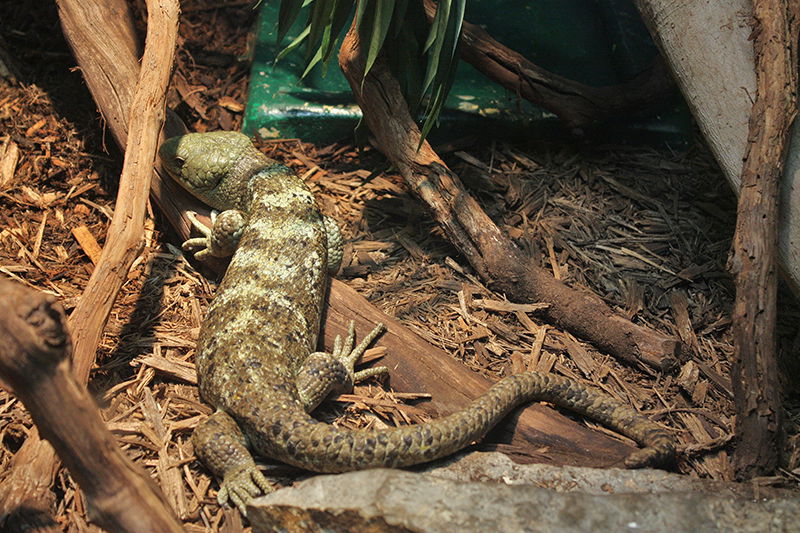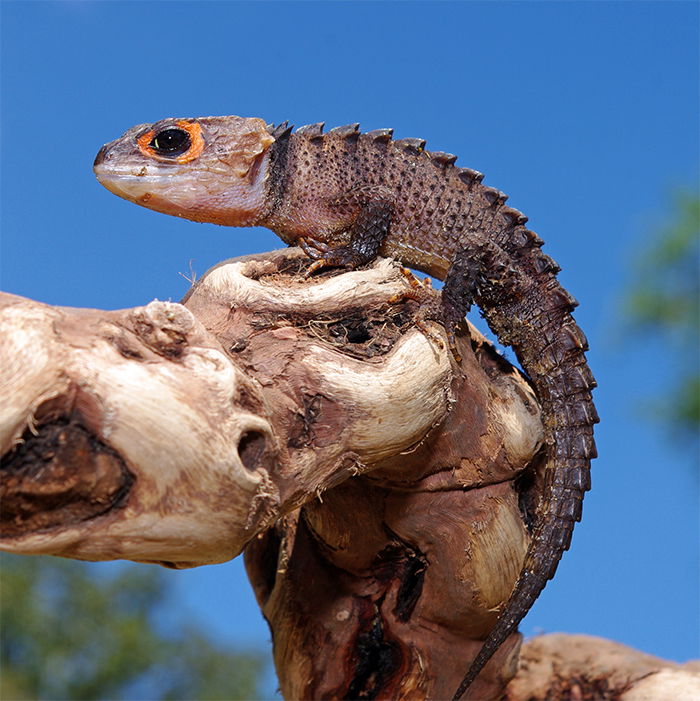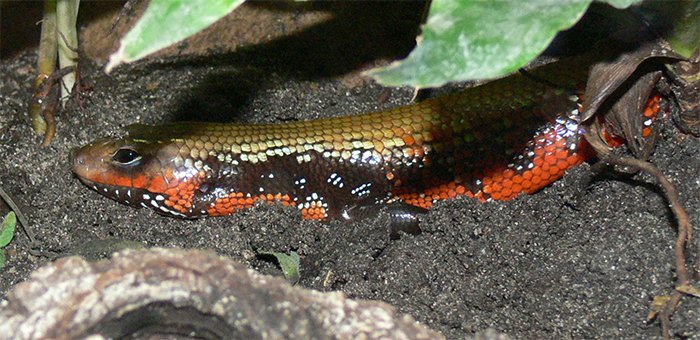Have You Seen This Lizard?
The_Gut from Canton, United States, CC BY 2.0 https://creativecommons.org/licenses/by/2.0, via Wikimedia Commons
Scincidae
by Inspector Barry Mins on February 8, 2022Hey kids, welcome back to our series on the mysteries of created kinds!
Last week we went looking for a bird in Indonesia, but there was not much to learn. This week, however, is much different.

There are over 1,500 species in this kind, in almost 170 genera. Because this kind is so big, I’ve elected to cover only a few of the species that are commonly sold as pets. Keep in mind, there are a lot more species than I can talk about, and they might do things differently than what I talk about here.
This kind has a varied diet. Some species eat snails1 while others prefer insect larva, beetles, and dragonflies.2 However, they are largely opportunistic feeders and will not reject plants, isopods, flies, ants, or other things they can swallow.3 This generalist diet has helped the kind spread throughout the globe.
The species in this kind vary wildly. Some are very colorful while others are dull. One even has a prehensile tail!4 Some are anti-social, and others are somewhat social, enjoying spending time with others of the same species.5 At least one species has a homing instinct, which means they are able to find their way home over long distances.6 Like many other reptile species, they tend to be active during the day, when they can warm themselves up in sunlight.7

Corucia zebrata
Postdlf, CC BY-SA 3.0 https://creativecommons.org/licenses/by-sa/3.0, via Wikimedia Commons
This prehensile-tailed skink is also known as the monkey skink, since it has a tail that curls like a monkey's tail.
When these lizards breed, they do so in some interesting ways. Some lay eggs while others give birth to live young. Females maintain higher body temperatures while carrying their young.8 Further, the female’s immune system is reduced during pregnancy to help prevent her body from rejecting her babies.9 In some cases, the parents will care for their young.10 The young have to be incubated at just the right temperature. If it gets too cold, the resulting young will be slower than those incubated at higher temperatures.11
Anyone figure it out yet? This week’s kind is the Scincidae, or the skinks. These lovely lizards are found worldwide where it is warm enough for reptiles and have a great deal of diversity. Next week we don’t have far to go. The next kind is a mammal and found worldwide as well.
Try out this fun skink crossword puzzle!
Clue
Your clue for the week is:
These organisms are sometimes kept as pets, are frequently considered a pest, are not something you want to find in your kitchen (though they may be there anyway), and your mom is probably scared of them.
Footnotes
- Schmuel Moran “A lizard, Eumeces schneideri, preying on the snail Theba pisana.” Israel Journal of Zoology, 28, no1 (1979), pp 38.
- J. Titus-McQuillan, D.J. Taylor, and A.M. Bauer. “Diet of Chalcides ocellatus (Squamata: Scincidae) from Southern Egypt.” Bulletin of the Peabody Museum of Natural History, 53, no. 2 (2012); 383-388.
- Mohsen Kalboussi and Said Nouira “Comparative diet of northern and southern Tunisian populations of Chalcides ocellatus (Forskal, 1775).” Revista Espanola de Herpetologia, 18(2004):29-39.
- Ingerid J. Hagen and C. Michael Bull. “Home ranges in the trees: radiotelemetry of the prehensile tailed skink, Corucia zebrata.” Journal of Herpetology, 45 no. 1 (2011) 36-39.
- Stephan T. Leu, Peter M. Kappeler, and C. Michael Bull. “The influence of refuge sharing on social behaviour in the lizard Tilaqua rugosa.” Behavioral Ecology and Sociobiology, 65 (2011), 837-847.
- Michael J. Freake “Homing behavior in the sleepy lizard (Tiliqua rugosa): the role of visual cues and the parietal eye.” Behavioral Ecology and Sociobiology 50 (2001):563-569.
- Luca Luiselli, Geoffrey C. Akani, Anthony E. Ogbeibu, Mike Uwaegbu and Nwabueze Ebere. “Activity patterns and habitat selection in a population of the African fire skink (Lygosoma fernandi) from the Niger Delta, Nigeria.” Herpetological Journal, 19 (2009):207-211.
- Elizabeth F. Daut and Robin M. Andrews. “The effect of pregnancy on thermoregulatory behavior of the viviparous lizard Chalcides ocellatus.” Journal of Herpetology 27, no. 1 (1993), 6-13.
- Matthew C. Brandley, Rebecca L. Young, Dan L. Warren, Michael B. Thompson, and Gunter P. Wagner. “Uterine gene expression in the live-bearing lizard Chalcides ocellatus, reveals convergence of Squamate reptile and mammalian pregnancy mechanisms.” Genome Biology and Evolution, 4, no. 3 (2012) 394-411.
- Ruston W. Hartdegen, Matthew J. Russel, Bruce Young, and Richard D. Reams. “Vocalization of the crocodile skink, Tribolonotus gracilis (De Rooy, 1909), and evidence of parental care.” Contemporary Herpetology, 2 (2001).
- Melanie J. Elphick, and Richard Shine. “Longterm effects of incubation temperatures on the morphology and locomotor performance of hatchling lizard (Bassiana duperreyi, Scincidae).” Biological Journal of the Linnean Society, 63 (1998), 429-447.
- © 2024 Answers in Genesis
- Privacy Policy
- Contact
- About


